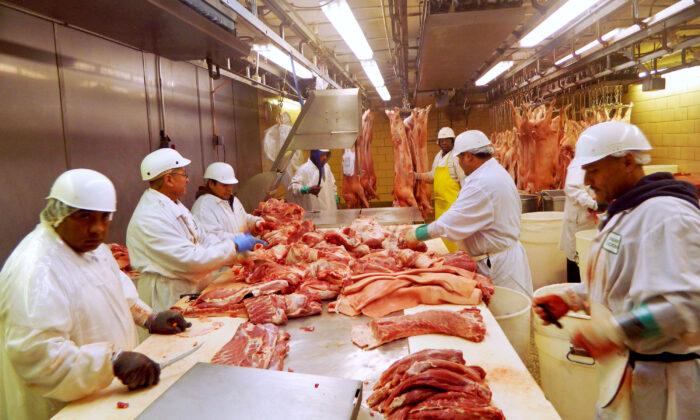News Analysis
Combined U.S. pork, beef and poultry supplies are running much higher than a year ago as American agriculture responds to booming increases in domestic and China demand.
The U.S. Daily Livestock Report estimates 2019 year-end inventories included: 1) 77.3 million live hogs, 3 percent higher than the previous year and 5.8 percent higher than two years ago; 2) 94.413 million live cattle, slightly lower than a year ago but about 5.2 million head larger than in 2015; and 3) 61.124 million chicken hatchery flock, 3.2 percent higher than a year ago and the highest live chicken flock on record.
American ranchers and farmers began cranking up production last summer in anticipation of the Phase 1 Sino-U.S. trade deal signed on Jan. 15 that committed China to almost triple annual U.S. agricultural purchases to about $50 billion.
The report’s author Len Steiner told the Farm Journal that robust demand/supply fundamentals that had driven meat prices higher in the first two months of 2020 collapsed in the first two weeks of March due to the coronavirus impact on financial market liquidity. He warned: “Economic data has yet to catch up with what’s happening, but the crash in the equity market is a clear indicator that markets think we are heading for a major contraction in output.”
But with American consumers stocking-up on food supplies to survive the coronavirus pandemic, futures prices for April deliveries of U.S. meats spiked higher on March 17 with live hogs up 8 percent; live cattle up 5 percent; and live chickens up 4.9 percent.
The size of the price moves may also reflect progress reports from China port associations for Shanghai and Tianjin that the backlog for unloading 20-foot refrigerated marine containers of mostly frozen pork, beef and chicken had shrunk from 27,000 units in mid-February to 18,000 in the first week of March. The associations have also installed 7,000 additional electrical connections for “plug in reefers” to expand their combined cold storage warehouse capacity by 40 percent.
Chinese officials had hoped to tame food inflation that was up in February by 21.9 percent over the prior year, mostly due to a 135 percent price spike for pork following African Swine Fever (ASF) deaths and precautionary kills that has wiped out half of China’s 440 million domestic herd since 2018. China recently reported a new ASF outbreak after the disease was detected in seven dead wild boars in Hubei Province.
Facing another spike in food prices, the Central Committee of the Communist Party of China (CPC) and the State Council issued Central Document No. 1 on March 17 that for the sixteenth consecutive year prioritizes China’s agriculture. The document stresses that “ensuring a steady output and supply of live pigs is a crucial task in terms of economics if the production of live pigs is to approach normal levels by the end of 2020.” But in reference to the new ASF outbreak the policy states: “However, this increase in production must be combined with epidemic prevention and control.”






Friends Read Free